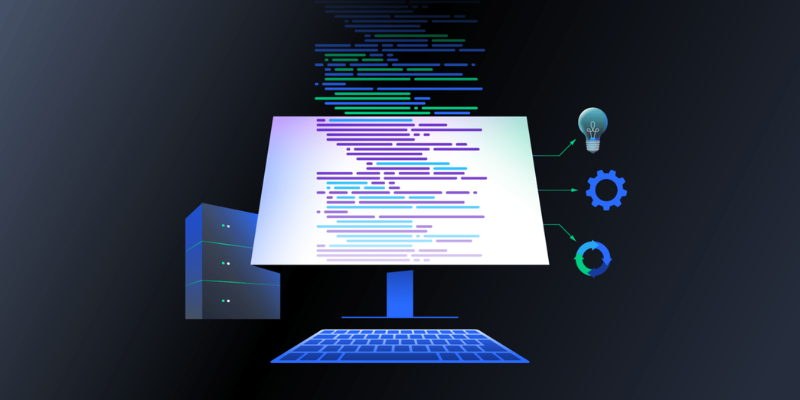Java is still one of the most powerful and widely used programming languages in the technology industry, and for good reason. It is a great option for creating anything from basic desktop utilities to complex business systems because of its platform neutrality, robust community support, and big libraries. To write clear, effective, and maintainable code, both novice and seasoned developers must grasp Core Java ideas.
These fundamental ideas influence how you approach long-term project success, application structure, and problem-solving. The most crucial Core Java ideas that every developer should comprehend will be covered in this blog, along with useful examples and advice that will improve your programming abilities and optimize your workflow. FITA Academy offers hands-on Core Java training that helps learners master essential programming concepts and build strong coding skills for real-world applications.
Fundamental Principles Behind Core Java
The core Java is the foundation of the Java programming language and includes fundamental ideas including control statements, data types, object-oriented programming (OOP), and simple APIs. You can develop logical, structured, and reusable code components with confidence if you grasp these principles. Classes, objects, inheritance, abstraction, polymorphism, and encapsulation are key components of Java’s robust OOP paradigm. Your code becomes modular and easier to maintain over time thanks to these principles.
Important capabilities like multithreading, file handling, and memory management are also included in core Java, which contribute to the robustness and dependability of Java applications. When you understand these ideas, you build skills that are applicable to many other object-oriented languages in addition to becoming a better Java developer. You can write streamlined code, solve problems fast, and build scalable applications by building a solid foundation with Core Java.
Right Java Environment and System Requirements
Setting up a suitable development environment is a prerequisite for learning Core Java programming. Installing the Java Development Kit (JDK), which contains necessary tools including the Java compiler and runtime environment, is the first step in the process. To guarantee stability and continuous upgrades, select the most recent LTS (Long-Term Support) version. Because Java works with various operating systems, including Windows, Linux, and macOS, developers may use it anywhere in the globe. After installing the JDK, the next step is to select a suitable Integrated Development Environment (IDE).
Helpful features like code auto-completion, debugging tools, and project management capabilities are provided by well-known programs like IntelliJ IDEA, Eclipse, and NetBeans. Make sure your computer has enough RAM, storage, and processing power to use these tools efficiently, particularly when working on big projects. For Java commands to function properly, PATH and JAVA_HOME variables must be set appropriately. Development is accelerated and needless mistakes are prevented in a well-organized setting. Accelerate your programming career with Core Java Training in Chennai, where you’ll learn essential OOP concepts, coding techniques, and application development skills to build robust, scalable software solutions.
Key Core Java Concepts Explained Step by Step
A thorough grasp of a few key ideas is necessary to master Core Java. Since data types, variables, operators, and control structures are the cornerstones of logical programming, start with them. After you’re at ease, move on to object-oriented principles: polymorphism allows for flexible interface implementation, abstraction simplifies complex logic, inheritance permits code reuse, and encapsulation protects data. Another crucial component is the Collections Framework, which provides effective data handling classes like ArrayList, HashMap, and HashSet.
Additionally, you should comprehend how Java uses finally statements, custom exceptions, and try-catch blocks to handle exceptions. With the help of these tools, you may create programs that gracefully handle mistakes rather than abruptly crashing. Multithreading, which enables your programs to run numerous tasks at once for improved performance, is another crucial idea. You can become proficient at solving practical programming problems by gradually mastering these ideas.
Performance and Handling Common Issues
Writing Java code is one thing, but what distinguishes proficient developers is their ability to write Java code efficiently. Choosing the appropriate data structures is the first step in performance optimization since collections have an impact on speed and memory usage. For instance, insertion and deletion operations can be improved in some situations by utilizing a LinkedList rather than an ArrayList. Additionally, since needless try-catch blocks might cause your program to lag, effective exception handling is essential. By learning this you can debug Core Java applications effectively.
Performance is greatly impacted by memory management. Java’s garbage collector helps you keep your memory clean automatically, but memory leaks can still occur when objects are misused or references are ignored. By implementing recommended practices like null checks and defensive coding, common problems like NullPointerException, ClassNotFoundException, and array indexing errors can be reduced. Performance bottlenecks can be found by using profiling tools in your IDE or external ones like JProfiler. Your Java apps will function easily and effectively if these issues are resolved.
Exploring Essential Java Tools, Libraries, and Features
The core Java has many built-in libraries and tools that greatly increase the productivity of development. Among the most popular elements are the java.time package, Streams API, and Collections Framework. Streams enable you to process data in a functional manner, improving the readability and conciseness of your code. Older, more error-prone classes are replaced by the java.time API, which streamlines date and time processing.
Other Development Tools and Frameworks
When it comes to integrating with other tools and frameworks, Java provides exceptional versatility. To create robust enterprise applications, developers frequently integrate Java with technologies like Spring, Hibernate, and Maven. Spring offers reliable modules for web development, security, and microservices and streamlines dependency injection. By eliminating the need to create intricate SQL queries, Hibernate aids in the management of database operations. Learning Core Java at a Business School in Chennai can elevate your project’s completeness and marketability through solid programming foundations and scalable application development expertise.

